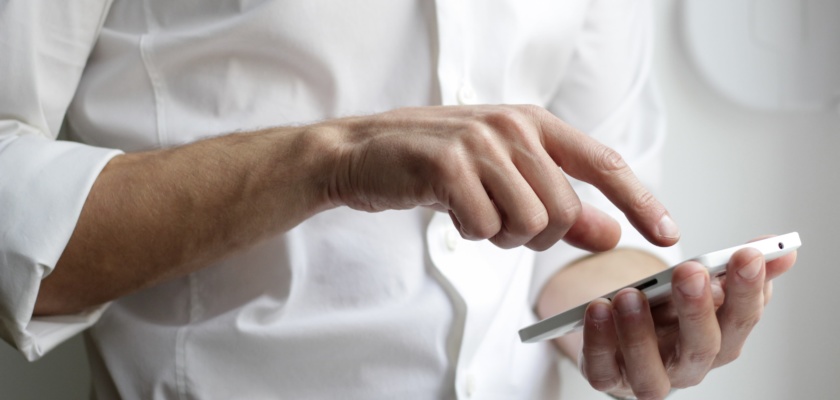6 Push Notification Best Practices for Your Ecommerce Brand

Customer engagement is a key part of building your ecommerce brand. And push notifications are one of the best ways to boost that engagement on mobile. But when the average consumer receives 46 of these notifications every day, according to Business of Apps, modern ecommerce brands need to understand push notification best practices to stand out.
Sending a great push notifications is difficult in the best of times. And it’s even more difficult during the holidays, when ecommerce shoppers are inundated with sale notifications, promotional reminders, and upcoming events.
Following push notification best practices helps you create, test, and send more effective messages to customers. It gives your team the opportunity to promote your brand, boost engagement with your products, and build stronger relationships with your audience. When there’s so much competition for customers’ time and attention, the more you understand how to connect with them, the easier it is to convert them.
1. Use Data to Target the Right Audience
Understanding the target audience for your push notifications is the first step toward increasing conversion rates and providing a more personalized experience. Customers need to feel like you’re providing something of value, which is much easier to accomplish when you send them notifications that appeal to their needs.
Start by compiling your current customers’ personally identifying information (PII), past purchase histories, and account behaviors. From there, you can categorize your audience into specific buyer personas based on shared characteristics.
Let’s say you’re gearing up for a big Black Friday sale at your brick-and-mortar location and want to let potential customers know what they can save by stopping by. Location-based push notifications are the way to go. You would be able to dig into customer data and pull out the specific customers who are within a specific geographic location near one of your stores.
Sephora does an excellent job of this in the following notification:

In this notification, Sephora lets the customer know what kind of value they’d get by stopping by the store and also highlights the fact that the store is close to the customer’s current location.
Whenever someone opts in to receive push notifications from your brand, this kind of direct marketing helps you increase foot traffic to physical locations.
2. Personalize the Content to Specific Customers
Personalization can increase conversion rates by 51%. When you tailor content to individual customers, it shows them that you’re invested in their specific needs. Combining this targeted messaging with your customer personas helps you connect with specific users and build trust in your relationships.
Start by using the customer’s name or including a recommendation for a product they engaged with in the past. Whenever someone browses your website, they’re providing valuable data on product preferences. And including those in your messaging shows that you’re paying attention to their needs.

Using specific customer information helps the notification feel more personal and adds an air of exclusivity to your brand as well. When you make recommendations for products the customer has shown interest in, it also increases the conversion potential of each notification.
That’s why product recommendations are a push notification best practice. By showing the potential customer you’ve paid attention to their habits, you potentially boost purchase intent and make it easier for them to complete the sale.
3. Include Emojis and Images to Show Your Personality
Including rich media in push notifications is a great way to make your content stand out. When you add images and emojis to push notifications, it shows off your brand’s personality while also giving you the opportunity to highlight specific aspects of your product. Emojis especially make the experience of interacting with your brand feel more like talking to a friend.
Including emojis and images in your push notifications is also a great way to communicate more information that would strictly be possible in a text-only message.
Here’s a fun push notification from Crate & Barrel. See how they include the turkey emoji as a part of their Black Friday sales announcement.
While not necessary, it does add personality to their push notification. When you have to contend with other ecommerce providers as well as the user’s work and personal communications, being able to stand out is paramount. That’s especially true with high-volume holidays like Thanksgiving and Black Friday.
Let’s take a closer look at the example in the first section. Notice how the product recommendation is included as an image to the right of the push notification text:
Including rich media can also be a great way to help your target audience feel like they’re interacting with your brand on a more direct level. Creating that kind of experience is a great step toward building an engaged relationship with customers.
4. Create A/B Tests to Refine Your Approach
Experiment with your push notifications to find what works. When you’re battling other ecommerce brands for consumer dollars during the holidays, it’s important to keep your communication fresh and engaging. A/B tests are one of the easiest ways to learn more about customer preferences while also ensuring a consistent experience with your brand.
Just make sure you define the specific ecommerce key performance indicators (KPIs) you want to impact with every test. Whenever you experiment with different push notification best practices to learn what truly works, you should have a baseline in place. Engagement rate and click-through rate (CTR) are great metrics for tracking how appealing your push notification content is, but you can also tie these metrics back to revenue by communication channel and customer acquisition costs (CAC).
Taplytics’ code-free experimentation platform makes the testing process simple and can reduce demands on your development team.

Both your marketing and your development teams will appreciate the ability to create and run these tests without complex coding getting in the way. Having a single location to run these tests also makes it much easier to analyze your success. You’ll have access to every test, as well as important analytics to track it’s impact on your KPIs.
5. Build Push Notifications into Your Cross-Channel Campaigns
Ecommerce customers interact with brands across a number of different channels every day. That’s why it’s so important to combine your push notifications with other cross-channel campaigns. It creates a more cohesive brand experience and makes it easier to provide consistent messaging across each of these channels. Done correctly, this cross-channel experience also reinforces the value of your product and keeps your company top of mind.
Using Taplytics, you can set up these cross-channel campaigns via Marketing Automation triggers, which sends push messages based on how potential customers interact with your product.

Just keep in mind that it’s also a good idea to maintain a consistent brand identity across all of these channels. Reusing images and content across email, social, and push notifications can make your products easier to recognize and reduce the amount of work it takes to create new campaigns.
Here’s an example from travel and luggage company Away:
 |
 |
Consistent imaging from Away Travel via email and Twitter
When you do so, however, just remember that each channel has different best practices for image sizes. Tailoring the image size to each of these channels makes it easier to make your message mobile-responsive. You don’t want to risk damaging the customer experience with awkward image-scaling issues.
6. Schedule Your Push Notifications for the Optimal Time
Your audience receives notifications on their phones constantly. A work email here, a text from family there—getting someone to engage with a brand message requires a great sense of timing. So dig into your customer data and push notification analytics to determine the best time to send these messages to your users.
Receiving a push notification in the middle of the night, for example, isn’t as valuable as receiving it right before a lunch break. It’s even better when you can time these notifications to correspond with an upcoming sale or offer. Using our push notification reporting, you’ll be able to learn more about what messages perform best based on a number of different metrics.

Performance history is a great way to determine what time of day to send push notifications to your different audiences. Just remember to set up A/B tests to refine your strategy. One way to set up these tests is to send the same push notification for your upcoming holiday sale at different times for the same audience.
By varying the timing, you’re able to refine whether it’s best to send these notifications in the morning rather than the evening, or whether you should notify people of a sale one hour before it starts or 15 minutes. All of this is valuable data for determining the optimal timing for your audience.
These Push Notification Best Practices Help Your Brand Stand Out
When there’s so much competition for consumers’ attention, incorporating push notification best practices into your marketing strategy is the key to connecting with the right audience.
Providing a consistently valuable experience across every communication channel helps your brand rise above the noise of holiday marketing. By standing out, you’re not just giving your product a better chance of attracting potential customers—you’re giving them an opportunity engage with your brand on a more direct level.


